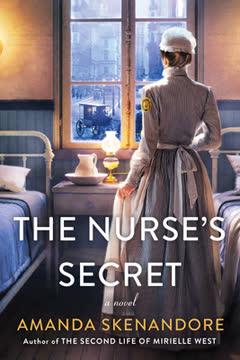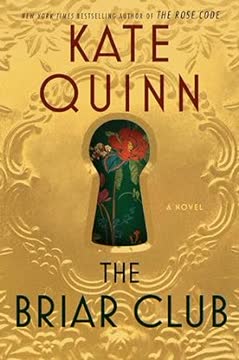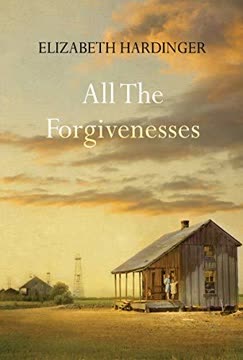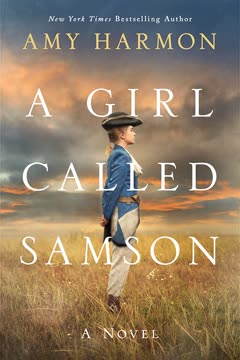Plot Summary
Shadows and Schemes in Station
In the bustling heart of 1883 New York, Una Kelly, a deft pickpocket, maneuvers through Grand Central Depot. Her target, a naive Midwesterner, falls prey to her nimble fingers as she lifts his cigarette case and cash. Una's life is a delicate dance of risk and reward, governed by self-imposed rules that keep her safe. However, a young thief's blunder nearly exposes her, forcing Una to intervene and save him from arrest. This encounter leaves her wary, highlighting the precariousness of her existence and the ever-present threat of capture.
A Thief's Narrow Escape
A close call with the police sends Una into a whirlwind of quick thinking and disguise, narrowly escaping arrest. This brush with the law shakes her confidence, making her acutely aware of the dangers of her lifestyle. The streets of New York, once her playground, now feel like a trap. Una's mind races with plans for a new life, one that promises security without sacrificing her independence, as she seeks a safer haven away from the constant threat of capture.
A New Life Beckons
Determined to escape the law, Una concocts a bold plan to join Bellevue Hospital's nursing school. Armed with forged documents and a fabricated past, she charms her way through the interview process, securing a place in the program. The nursing school offers a perfect cover, a place to hide in plain sight while she plots her next move. As Una embarks on this new chapter, the challenges of maintaining her deception loom large, testing her resolve and adaptability.
Trials of a Probationer
As a probationer at Bellevue, Una faces the rigors of nursing training under the stern Miss Hatfield. Her street smarts clash with the school's strict discipline, and she struggles to adapt. Mistakes and misunderstandings threaten her position, but Una's determination keeps her afloat. She learns to navigate the hospital's hierarchy, using her cunning to survive the probationary period. The pressure mounts as she balances her past with her new identity, striving to maintain her cover while proving her worth.
Secrets and Surprises Unveiled
Una forms an unlikely friendship with Drusilla, a fellow trainee with her own struggles. Together, they face the challenges of nursing school, sharing secrets and support. Una's past catches up with her when she encounters Dr. Westervelt, a young doctor who sees through her facade. His unexpected kindness and interest in her story unsettle Una, forcing her to confront her own vulnerabilities. The bonds she forms become both a lifeline and a liability, as she navigates the complexities of her dual life.
Blood and Bonds Tested
Una's resolve is tested when she assists in a high-stakes surgery. Her quick thinking and calm under pressure earn her respect, but also draw unwanted attention. The experience strengthens her bond with Drusilla, who faces her own fears. Una's growing confidence in her new role is tempered by the constant threat of exposure. The hospital becomes a stage where her past and present collide, testing her loyalty and courage as she strives to maintain her cover.
A Dance on Thin Ice
Una's relationship with Dr. Westervelt deepens during a clandestine meeting in Central Park. Their shared histories and mutual understanding create a connection Una didn't expect. The outing is a respite from her double life, but also a reminder of the risks she faces. As they skate on the frozen lake, Una grapples with her feelings and the precariousness of her situation. The dance on ice mirrors her life—beautiful yet fraught with danger, as she balances her emotions with the need to maintain her cover.
A Kiss and Consequences
Una's mind is a whirlwind after a kiss with Dr. Edwin Westervelt. Her focus falters, leading to mistakes at Bellevue Hospital. As she awaits her probationary review, Una is haunted by the possibility of expulsion. Her relationship with Edwin, though thrilling, is fraught with risk, as any association could jeopardize her position. Despite the joy of their clandestine meetings, Una is reminded of the precariousness of her situation, torn between her feelings and the need to maintain her cover.
Una's Probationary Fate
Una's anxiety peaks as she awaits her meeting with Superintendent Perkins. Despite her fears, she is informed that she has passed her probation. The news is a lifeline, offering her a chance to continue her new life. However, the relief is tempered by the realization that her deception must continue. Una's success is bittersweet, as she grapples with the weight of her secrets and the fear of exposure, striving to maintain her cover while proving her worth.
A Dangerous Discovery
Una's world is upended when she discovers that Conor, the ambulance driver, is the murderer she has been seeking. Her suspicions are confirmed through a series of dangerous encounters and revelations. Una's determination to bring Conor to justice is fueled by the knowledge that he poses a threat to everyone at Bellevue. Her resolve is tested as she navigates the treacherous path of exposing a killer while protecting her own secrets, striving to maintain her cover while seeking justice.
Confronting the Killer
With the help of Barney, a reporter, Una devises a plan to lure Conor into confessing. The confrontation is fraught with danger, as Una must rely on her wits to survive. The plan nearly goes awry, but Una's quick thinking and bravery lead to Conor's capture. The experience leaves Una shaken but resolute, as she realizes the depth of her courage and the importance of her newfound purpose, striving to maintain her cover while seeking justice.
A New Beginning
In the aftermath of Conor's arrest, Una faces the consequences of her actions. Superintendent Perkins offers her a chance to continue at Bellevue, albeit without official recognition. Una's relationship with Edwin is rekindled, as he seeks forgiveness and a fresh start. Together, they embrace the possibility of a future built on honesty and trust. Una's journey from thief to nurse is marked by growth, redemption, and the promise of a new beginning, as she strives to maintain her cover while seeking justice.
Characters
Una Kelly
Una is a resourceful and intelligent pickpocket navigating the dangerous streets of 1883 New York. Her life is governed by a set of self-imposed rules that keep her safe. When a close call with the law forces her to seek refuge, she joins Bellevue Hospital's nursing school under a false identity. Una's quick wit and adaptability help her survive, but her past constantly threatens to unravel her new life. Her journey is one of survival, deception, and unexpected self-discovery.
Drusilla "Dru" Lewis
Drusilla is Una's roommate and fellow probationer at Bellevue. Her cheerful disposition and genuine desire to help others make her a natural nurse, but her fear of blood poses a significant challenge. Dru's friendship with Una provides both support and complications, as they navigate the trials of nursing school together. Her unwavering optimism and determination inspire Una, even as Dru faces her own fears and insecurities.
Miss Hatfield
Miss Hatfield is a head nurse at Bellevue, overseeing the probationers with a strict and critical eye. Her disdain for Una is palpable, and she seems determined to see her fail. Miss Hatfield's rigid adherence to rules and high standards make her a formidable adversary. Her presence is a constant reminder of the precariousness of Una's position, and her approval is a hurdle Una must overcome to succeed.
Dr. Edwin Westervelt
Dr. Westervelt is a young physician at Bellevue, known for his skill and empathy. His family history is marked by scandal, and he carries the weight of his father's failures. Edwin's interest in Una is genuine, and he sees beyond her facade. Their shared experiences create a bond that challenges Una's guarded nature. Edwin's kindness and understanding offer Una a glimpse of a life beyond deception, but also complicate her carefully constructed plans.
Nurse Cuddy
Nurse Cuddy is a second-year trainee at Bellevue, hiding her pregnancy to avoid expulsion. Her condition forces Una to take on additional responsibilities, creating both opportunities and risks. Cuddy's secret becomes a shared burden, binding her to Una in a precarious alliance. Her situation highlights the challenges faced by women in the nursing profession and the lengths they must go to protect their futures.
Conor McCready
Conor's outward charm masks a dark and dangerous nature. His disdain for the vulnerable and marginalized reveals a deep-seated prejudice that drives his murderous actions. Conor's interactions with Una are marked by manipulation and deceit, ultimately leading to his downfall. His character serves as a cautionary tale of the dangers of unchecked hatred and violence.
Plot Devices
Deception and Identity
The central plot device is Una's deception, as she navigates her dual identity as a nurse trainee and a fugitive thief. Her ability to adapt and manipulate her surroundings is key to her survival. The tension between her past and present creates a constant undercurrent of suspense, as Una balances the demands of her new life with the ever-present threat of exposure. Her journey explores themes of identity, trust, and the possibility of redemption.
Friendship and Loyalty
Una's interactions with Drusilla and Dr. Westervelt introduce themes of friendship and loyalty. These relationships challenge Una's self-reliance and force her to reconsider her rules. The bonds she forms are both a source of strength and a potential liability, as they complicate her efforts to maintain her deception. The dynamics of trust and betrayal are central to Una's development and the unfolding narrative.
Social Commentary
The story provides a commentary on the social dynamics of 1883 New York, particularly the roles of class and gender. Una's journey highlights the limited opportunities available to women and the societal expectations they face. The nursing school serves as a microcosm of these issues, with its strict hierarchy and emphasis on propriety. Una's experiences reflect broader themes of inequality and the struggle for autonomy in a rigid society.
Analysis
"The Nurse's Secret" by Amanda Skenandore is a compelling exploration of identity, deception, and the quest for redemption. Through Una Kelly's journey from a cunning pickpocket to a dedicated nurse, the novel delves into the complexities of self-discovery and the transformative power of trust and friendship. The narrative is rich with social commentary, highlighting the challenges faced by women in the late 19th century and the rigid societal structures that constrain them. Una's story is a testament to resilience and adaptability, as she navigates the precarious balance between her past and present. The novel ultimately underscores the possibility of redemption and the strength found in embracing one's true self, offering readers a poignant reflection on the human capacity for change and growth.
Last updated:
FAQ
Synopsis & Basic Details
What is The Nurse's Secret about?
- Una's desperate escape: The Nurse's Secret introduces Una Kelly, a cunning pickpocket in 1883 New York City, whose life of petty crime is upended after a close call with the law and a murder she witnesses. Desperate to evade capture and start anew, Una devises a daring plan to hide in plain sight.
- A new identity at Bellevue: Under a fabricated identity and with forged documents, Una infiltrates the prestigious Bellevue Hospital Training School for Nurses. Here, she navigates the strict discipline, demanding curriculum, and judgmental staff, all while struggling to maintain her elaborate deception.
- Unlikely alliances and a dark mystery: As Una grapples with her dual life, she forms an unexpected friendship with her earnest roommate, Drusilla, and a complicated romantic connection with Dr. Edwin Westervelt. Her past, however, refuses to stay buried, drawing her into a dangerous investigation of a series of murders that seem connected to the hospital itself.
Why should I read The Nurse's Secret?
- Rich historical immersion: Dive into a meticulously researched Gilded Age New York, exploring the stark contrasts between opulent wealth and grinding poverty, and the nascent, often brutal, world of professional nursing at America's first training school. This historical fiction offers a vivid backdrop for a compelling story.
- Complex character journey: Follow Una Kelly's transformative arc from a cynical, self-preserving thief to a woman grappling with empathy, loyalty, and a burgeoning sense of purpose. Her internal struggles and moral dilemmas provide deep psychological insight, making her a truly memorable protagonist.
- Gripping suspense and mystery: Beyond the historical setting and character drama, the novel weaves a taut mystery, challenging readers to uncover a hidden killer within the seemingly respectable walls of Bellevue, keeping you on the edge of your seat until the very end.
What is the background of The Nurse's Secret?
- Gilded Age New York's stark realities: The novel is set against the backdrop of 1883 New York City, a period characterized by immense wealth disparity, rapid industrialization, and burgeoning social reform movements. This era saw the rise of "Millionaire's Row" alongside notorious slums like the Five Points and Hell's Kitchen, vividly contrasting Una's two worlds.
- Pioneering nursing education: The story highlights the historical context of the Bellevue Hospital Training School for Nurses, the first of its kind in America, established in 1873. It accurately portrays the strict qualifications for applicants (single, literate, Christian women aged 21-35), the rigorous training, and the societal resistance from male physicians who feared women's encroachment into medicine, as detailed in the author's note.
- Medical practices of the era: The narrative integrates the medical realities of the late 19th century, including the slow adoption of Joseph Lister's antiseptic principles, the prevalence of diseases like typhus, and the rudimentary understanding of mental health, with institutions like the Insane Pavilion and Blackwell's Island asylum playing significant roles.
What are the most memorable quotes in The Nurse's Secret?
- "Rule number eleven: Sometimes the best place to hide is in plain sight." (Chapter 2): This quote encapsulates Una's core strategy for survival and her entire journey at Bellevue. It highlights her cunning and adaptability, but also foreshadows the irony of her eventual self-discovery within her disguise.
- "You crooks are all the same. You'd stab a knife into your own mother if it meant saving your skin." (Chapter 8): Spoken by Detective Collins, this harsh judgment reflects society's cynical view of Una's class and her own ingrained self-preservation. It sets up a central thematic conflict: Una's struggle to defy this stereotype and embrace empathy.
- "I'm seldom wrong about people, Miss Kelly. In the end, it's a question of heart. I'm no longer in doubt about yours." (Chapter 49): Superintendent Perkins's powerful statement marks Una's ultimate redemption and acceptance. It signifies Una's transformation from a guarded thief to a compassionate nurse, validating her journey and the genuine change in her character.
What writing style, narrative choices, and literary techniques does Amanda Skenandore use?
- Third-person limited perspective: The narrative primarily follows Una Kelly's internal thoughts and experiences, offering intimate access to her fears, calculations, and evolving emotions. This choice deepens reader empathy for Una, even when her actions are morally ambiguous, making her journey of self-discovery particularly compelling.
- Sensory-rich historical detail: Skenandore immerses the reader in 1880s New York through vivid sensory descriptions, from the "wheeze of steam and whine of metal" at Grand Central to the "smell of piss and rotting food scraps" in the tenements, and the "sharp, eye-watering scent of disinfectant" in the morgue. This meticulous detail grounds the historical setting and enhances the reader's experience.
- Foreshadowing and thematic parallels: The author skillfully employs subtle foreshadowing, such as Barney's early inquiries into stranglings, and draws thematic parallels between characters, like Edwin's troubled father and Una's own, to enrich the plot and deepen the exploration of themes like class, identity, and the burden of the past.
Hidden Details & Subtle Connections
What are some minor details that add significant meaning?
- Una's evolving "rules": Una's internal list of rules, like "Rule number one: Look out for yourself" or "Rule number eleven: Sometimes the best place to hide is in plain sight," initially serve as her survival guide. However, her gradual breaking or reinterpretation of these rules, particularly in her relationships with Dru and Edwin, subtly tracks her shift from cynical self-preservation to genuine connection and empathy, a key aspect of her character development.
- The significance of stolen trinkets: The specific items Una steals, such as Barney's silver tie pin or Dr. Pingry's utilitarian pocket watch, are not just monetary gains but symbolic markers. Barney's pin, initially a casual theft, becomes a tool for her escape and a symbol of their complex bond, while Dr. Pingry's watch, taken out of spite, highlights Una's lingering resentment towards authority and her struggle with her thieving past.
- Environmental contrasts and sensory details: The stark sensory differences between the "noisome crowds" and "privy muck" of the slums and the "plush Oriental rug" and "freshly cut flowers" of the nurses' home underscore Una's journey between two worlds. Her initial revulsion at the hospital's "poisonous gases" from the water closet, contrasted with her later acceptance, subtly reflects her adaptation and growing comfort in her new, respectable identity.
What are some subtle foreshadowing and callbacks?
- Barney's early murder inquiries: In Chapter 3, Barney Harris questions Una about the strangling of "Big-nosed Joe" and Martha Ann, suggesting a pattern. This seemingly minor interaction subtly foreshadows the later discovery of Traveling Mike's murder by strangulation and the eventual revelation of Conor McCready as a serial killer, linking the seemingly disparate events.
- The "Bone Bill" and unclaimed bodies: Dru's explanation of the 1854 "Act to Promote Medical Science and Protect Burial Grounds" in Chapter 19, detailing how unclaimed vagrants' bodies are given to medical colleges for dissection, chillingly foreshadows Deidre's fate. This detail not only adds historical context but also heightens the emotional impact of Una's desperate efforts to prevent Deidre's body from being dissected.
- Una's mother's death by fire: The recurring memory of Una's mother dying in a tenement fire, particularly the detail of "blue threads... glued to her melted flesh" (Chapter 35), serves as a powerful callback. This trauma underpins Una's initial cynicism and self-reliance, but her later re-evaluation of her mother's charitable nature on the hospital balcony (Chapter 43) marks a significant emotional turning point and a shift in Una's own capacity for empathy.
What are some unexpected character connections?
- Edwin's and Una's mirrored paternal struggles: A subtle but profound connection exists between Edwin and Una through their problematic fathers. Edwin's shame over his father's "business venture," drinking, gambling, and mistress in New Orleans (Chapter 24) mirrors Una's own experiences with her opium-addicted, alcoholic father. This shared vulnerability, revealed during their ice-skating conversation, allows for a deeper understanding and trust to develop between them, transcending their class differences.
- Conor McCready's hidden prejudice: Conor's seemingly innocuous comments about "boot scum" and "gutter rats" (Chapter 31) initially appear as common Gilded Age prejudices. However, his later vitriol towards Deidre ("She's what passes for a lady in the slums") and his confession of killing "Thieves and whores and drunks" (Chapter 48) reveal a deeper, murderous prejudice. This connects to Una's own past as a "slum-dweller" and highlights the constant danger she faced, even from those who seemed friendly.
- Marm Blei's complex mentorship: Marm Blei, Una's initial mentor, is more than just a fence; she's a surrogate mother figure who teaches Una the "art of the grift" and the rules of survival. Her eventual betrayal, leaving Una to face murder charges, is a harsh lesson in self-reliance, but also a catalyst for Una's growth beyond the criminal underworld. This complex relationship underscores the novel's themes of loyalty and the difficult path to independence.
Who are the most significant supporting characters?
- Marm Blei, the pragmatic matriarch: Marm Blei serves as Una's shrewd, albeit ruthless, mentor in the criminal underworld. Her "cut-through-stone voice" and pragmatic rules, like "better caution at first than tears after" (Chapter 4), shape Una's early survival instincts. Her ultimate betrayal, abandoning Una to face murder charges, is a pivotal moment, forcing Una to truly stand on her own and seek a different path, highlighting the theme of self-reliance.
- Superintendent Perkins, the discerning leader: Miss Perkins embodies the strict yet ultimately compassionate authority of the Bellevue Training School. Her "shrewdness of a safecracker casing a bank" (Chapter 13) allows her to see through Una's initial facade, but her "warmth" and belief in Una's "heart" (Chapter 49) offer Una a chance at redemption. She represents the moral compass and the potential for institutional reform, challenging Una to live up to her true potential.
- Barney Harris, the earnest ally: Barney, the reporter, is a consistent, if sometimes bumbling, ally to Una. His genuine concern for the "slums" and his willingness to help Una with forged documents and later in confronting Conor, despite the risks, showcases his integrity. He represents the possibility of honest journalism and unwavering support, contrasting with the self-serving nature of many other characters and reinforcing themes of trust and justice.
Psychological, Emotional, & Relational Analysis
What are some unspoken motivations of the characters?
- Miss Hatfield's hidden insecurities: Beyond her overt disdain for Una's "bad breeding" and "quotidian education," Miss Hatfield's relentless scrutiny and desire to see Una fail might stem from her own insecurities or a rigid adherence to class distinctions. Her "smug expression" (Chapter 15) and "thinly veiled disdain" (Chapter 13) could mask a fear that Una's natural aptitude challenges the established order she so carefully upholds, revealing a deeper psychological complexity.
- Conor McCready's twisted moral code: Conor's murderous actions are fueled by a deep-seated prejudice against the "Thieves and whores and drunks" of the city, whom he views as "vermin" and "a plague" (Chapter 45). His motivation isn't just simple hatred, but a twisted sense of moral cleansing, believing he is purging society of its "sins" (Chapter 48). This reveals a dangerous psychological pathology, where his self-righteousness justifies extreme violence.
- Edwin's desire for authenticity: Edwin's attraction to Una, despite her "lies" and "deception," is driven by an unspoken yearning for authenticity and a desire to break free from his family's stifling legacy. His confession, "I wish I had the courage to be my own man" (Chapter 28), reveals his internal conflict. Una's unvarnished honesty, even when painful, offers him a glimpse of a life lived without pretense, a stark contrast to the "prescribed roles" he feels forced to play.
What psychological complexities do the characters exhibit?
- Una's struggle with vulnerability and self-worth: Una's journey is a profound exploration of her psychological complexities. Her "rules" are a defense mechanism against a world that has repeatedly betrayed her, leading to a deep-seated fear of vulnerability. Her initial inability to accept genuine kindness or love, viewing it as a "trap" or a "debt," slowly gives way to a recognition of her own worth and capacity for connection, particularly through her relationships with Dru and Edwin.
- Drusilla's intellectual prowess vs. emotional fragility: Dru presents a fascinating dichotomy: a brilliant, encyclopedic mind capable of memorizing complex medical texts and deducing intricate details, yet she is emotionally fragile, prone to fainting at the sight of blood and easily overwhelmed by conflict. This contrast highlights the psychological toll of her ambition and the societal pressures on women, even those of intellect, to conform to certain emotional standards.
- Edwin's internal conflict between legacy and personal conviction: Edwin grapples with the psychological burden of his family's esteemed medical legacy and his father's scandalous failures. He struggles to reconcile his own progressive medical beliefs (like Lister's antiseptic methods) with Dr. Pingry's traditional, often harmful, practices. This internal conflict, coupled with his attraction to Una, forces him to confront his own identity and ultimately choose between societal expectation and personal conviction.
What are the major emotional turning points?
- Una's Hart Island revelation: Witnessing Deidre's undignified burial at Hart Island (Chapter 36) is a profound emotional turning point for Una. The "barrenness of potter's field" and the sight of "a human bone" among the dirt trigger a deep sense of grief and existential dread, making her question the purpose of her life and the value of her "rules." This experience shatters her cynical detachment and ignites her resolve to seek justice for Deidre.
- Una's balcony catharsis: The scene on the hospital balcony (Chapter 43), where Una finally allows herself to weep, marks a crucial emotional release. Her tears are not just for the deceased patient, but for her mother, her father, and her own "nine-year-old self for mistaking heartbreak for hatred." This moment of vulnerability and self-forgiveness is pivotal, allowing her to shed years of suppressed grief and open herself to genuine connection.
- Edwin's declaration of love and Una's confession: Edwin's heartfelt "I love you, Una Kelly" (Chapter 34) and Una's subsequent, albeit forced, confession of love (Chapter 39) are major emotional turning points. These declarations, initially met with Una's fear and resistance, force her to confront the depth of her feelings and the impossibility of maintaining her deception. It sets the stage for her eventual, honest revelation of her past, risking everything for a chance at true connection.
How do relationship dynamics evolve?
- Una and Dru: From convenience to unwavering loyalty: Their relationship begins as a pragmatic alliance, with Una using Dru's intelligence for academic survival and Dru finding a confidante. However, it evolves into a deep, unconditional friendship. Dru's unwavering belief in Una's "brave and true of heart" nature (Chapter 49), even after Una implicates her, and Una's subsequent guilt and fierce protectiveness, demonstrate a profound shift from self-interest to mutual devotion, challenging Una's "look out for yourself" rule.
- Una and Edwin: From guarded attraction to honest partnership: Their dynamic starts with a flirtatious dance of deception and attraction, complicated by Una's secrets and Edwin's societal standing. Edwin's persistent kindness and Una's gradual softening lead to a passionate connection. The turning point is Una's full confession of her past and Edwin's eventual acceptance, culminating in a relationship built on "honesty and trust" (Chapter 50), transcending class and past transgressions.
- Una and Marm Blei: Mentor-mentee to bitter independence: Marm Blei initially serves as Una's surrogate mother and teacher in the criminal world, providing protection and a sense of belonging. However, Una's ambition and Marm Blei's possessiveness lead to a rupture. Marm Blei's abandonment of Una in jail forces Una to realize she must forge her own path, free from the "woman's thumb" (Chapter 5), marking her transition from a subordinate to an independent agent.
Interpretation & Debate
Which parts of the story remain ambiguous or open-ended?
- The long-term viability of Una and Edwin's relationship: While the ending offers a hopeful "new beginning" for Una and Edwin, the story leaves the long-term challenges of their relationship open-ended. Their class differences, Edwin's family's potential disapproval, and Una's past as a "former thief" (Chapter 50) are significant hurdles. The narrative suggests their love is strong, but the practicalities of navigating Gilded Age society as a couple from such disparate backgrounds remain a compelling ambiguity.
- The full extent of Marm Blei's true feelings for Una: Marm Blei's character is complex, acting as both a protector and exploiter. Her decision to abandon Una, stating, "You're a smart girl, Una. Too smart sometimes for your own good. You'll figure something out" (Chapter 10), could be interpreted as a harsh lesson in independence or a calculated move to eliminate a rival. The ambiguity of her true affection versus her self-interest leaves readers to debate the depth of their bond.
- The fate of Nurse Cuddy and her child: Nurse Cuddy's pregnancy and subsequent illness with typhus are significant plot points, but her ultimate fate and that of her baby are not explicitly detailed. While Una uses her newfound influence to ensure Cuddy can stay at the school, the challenges of being an unmarried mother in that era, even for a nurse, suggest a difficult road ahead, leaving her future open to interpretation.
What
Review Summary
The Nurse's Secret is a captivating historical fiction novel set in 1880s New York. Readers praise the well-researched portrayal of early nursing, vivid characters, and engaging mystery plot. The protagonist, Una Kelly, is a complex and likable character who evolves throughout the story. Many reviewers enjoyed the blend of historical detail, medical information, and suspenseful elements. The book's pacing, dialogue, and atmospheric setting were also highly praised. Overall, it's recommended for fans of historical fiction with a touch of mystery and romance.
Similar Books
Download PDF
Download EPUB
.epub digital book format is ideal for reading ebooks on phones, tablets, and e-readers.










